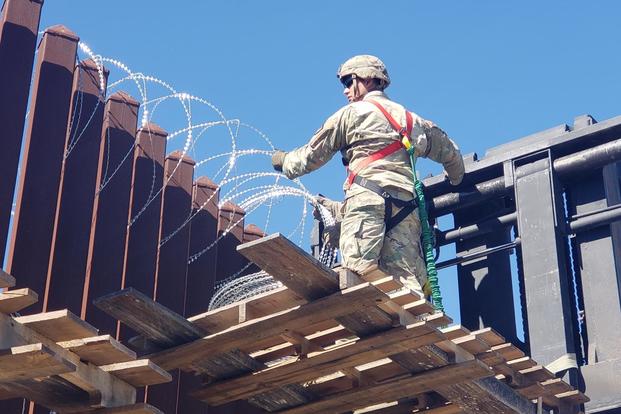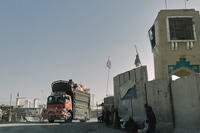The 5,800 active-duty troops deployed to the border to help stop a group of migrants seeking to enter the U.S. could begin "downsizing" well before Christmas if it's OK with Customs and Border Protection, a Pentagon spokesman said Monday.
"We'll continue to support CBP's request for support up until Dec. 15," the loosely defined date for the deployment to end, unless directed otherwise, Army Col. Rob Manning, a Pentagon spokesman, said at an informal briefing. "At some point in time when the work is done, we'll start downsizing some capability or shift capability elsewhere on the border."
But, he added, the troop presence will be determined by the requests of CBP and the Department of Homeland Security.
"Bottom-line numbers will be commensurate with the capabilities that DHS and CBP [request]," Manning said.
Currently, about 2,800 active-duty troops are in Texas, 1,500 in Arizona and 1,500 in California, he said. An additional 2,100 National Guard troops have also been deployed to the border.
Manning said the troops will get traditional Thanksgiving Day meals, but their ability to take leave for the holiday will be determined by individual units.
The Defense Logistics Agency has included the troops on the border on its list of deployed service members around the world for distribution of more than 300,000 Thanksgiving Day meals, he said.
Under federal law, the troops on the border cannot detain or arrest anyone, and can only assist CBP efforts, but President Donald Trump has said repeatedly that their presence is required to help stop an "invasion."
Manning said the troops' work has mainly involved shoring up barricades at points of entry and stringing concertina wire at crossing points considered vulnerable.
He released figures which, roughly translated, showed that the troops thus far have put down about seven miles of wire along the nearly 2,000-mile southern border with Mexico.
On Saturday, as he left for California to inspect efforts to fight wildfires, Trump praised the border troops for building a "very beautiful fence," an apparent reference to the concertina wire.
"The fence is fully manned; nobody gets through," he said. "When they're caught, they're not released."
When the deployments began last month, Air Force Gen. Terrence J. O'Shaughnessy, head of U.S. Northern Command, said at a news conference that the troops would likely bring with them about 150 miles' worth of wire. He also said the tentative date for the end of the deployment is Dec. 15.
Trump has said that as many as 10,000 to 15,000 active-duty troops could eventually be deployed to the border, but Deputy Defense Secretary Patrick Shanahan said last week that the number of troops at the border had likely peaked at about 5,800 or 5,900.
-- Richard Sisk can be reached at Richard.Sisk@Military.com.













